
at the Clambake restaurant, Scarborough, Maine.
Dinner requires a little more thought about texture than usual. Really crusty bread is out, obviously, and the things that work so well with crusty bread are far less appealing when one imagines squishy grocery store bread alongside them. Eggs in all forms are ideal for times like these, but we already eat plenty of them. Polenta might be nice, but it's not what one really wants to eat on a late spring/early summer evening. Nor great big pots of soup or beans. Cold sesame noodles, however, are just right. Most of the recipes are pretty basic and benefit from an addition of barely-steamed vegetables: yellow wax beans (like so), spinach, carrots, and mushrooms work very well, as do raw bell peppers, chopped cucumbers, finely shredded cabbage, and crisp greens like mizuna. This recipe has been a recent favorite, but I'm not so in love with it that I won't try others. (Note, however, that it's improved by using rice vinegar rather than red wine vinegar, and that if your soy sauce or tamari is very low in sodium you may need to add a little salt).
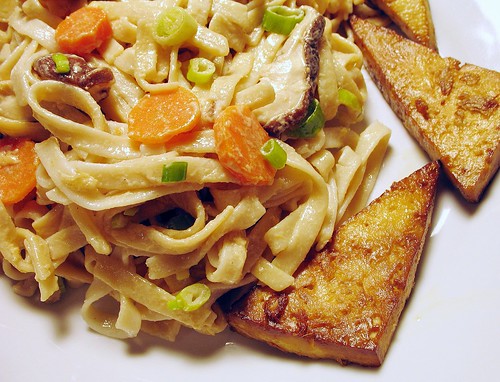
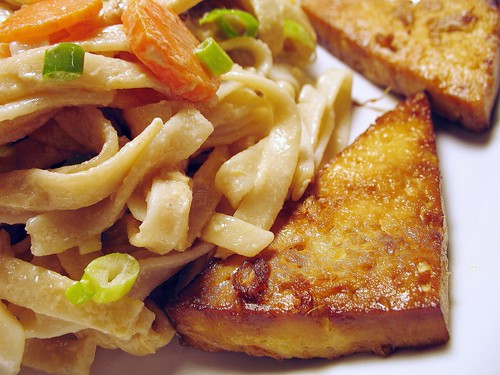
I've had Hsiang Ju Lin and Tsuifeng Lin's The Art of Chinese Cuisine on my shelf for ages and had never cooked from it so I decided to try their recipe instead. It's very basic but I nonetheless made a few changes to it, so we'll call this an adaptation. First, the recipe called for MSG, which has fallen out of fashion since the book was published in 1969. Second, the recipe called for only a very scant measure of peanut butter and didn't specify how much sauce it yields; I had tahini instead, and nearly a pound of brown rice noodles I wanted sauce for, so I upped the measurements a bit. And finally, the recipe called for 1 pound of bean sprouts; I do like them but I had other vegetables I wanted to use instead (mushrooms, carrots, and scallions).
cold noodles with sesame sauce
adapted from Hsiang Ju Lin and Tsuifeng Lin's The Art of Chinese Cuisine
serves 4
for the sauce:
1 tablespoon finely chopped fresh ginger
1 teaspoon plus 1 tablespoon peanut oil
3/4 teaspoon mirin (you can use sugar instead)
1 tablespoon sesame oil
1/4 cup tahini (you can use peanut butter instead, although the flavor will of course be different)
2 tablespoons tamari (or low-sodium soy sauce)
1 tablespoon rice vinegar
approximately 3 tablespoons water
fresh finely ground white pepper (or dried red chile flakes or shreds if you want spicy noodles)
An hour or so before you are ready to begin cooking, marinate the finely chopped ginger in 1 teaspoon peanut oil and 3/4 teaspoon mirin or sugar. (I'm not sure what the reasons for this step are but the original recipe insists on it; I'm guessing it enhances the flavor of the ginger).
Whisk together with a fork 1 tablespoon peanut oil, 1 tablespoon sesame oil, the tahini, the tamari, and the rice vinegar. Whisk in approximately 3 tablespoons water, or a little more if your tahini is very thick, until the sauce is a nice consistency for coating the noodles. Stir in the ginger and its marinade and season the sauce to taste with the white pepper.
for the noodles:
1 14 oz. packet of brown rice pasta
vegetables of your choice (I used a large handful of shiitake mushrooms and 1 large carrot), sliced or shredded
2 to 3 scallions (green onions), finely sliced
2 tablespoons toasted and lightly crushed sesame seeds (optional)
a handful of sprouts to throw over the top (optional)
Prepare the noodles according to the package directions and steam or blanch your vegetables while they're cooking. Toss the cooked noodles with the sauce until they are thoroughly coated. Gently mix in the vegetables, scallions, sprouts and sesame seeds (if using). You might want to reserve some of the sesame seeds to sprinkle on individual servings; we left them out this time because we didn't want to antagonize Mr. Banquet's dentist.
After so many utilitarian dinners, dessert seemed to be in order. I had gorgeous local strawberries and couldn't remember the last time I'd had strawberry shortcake so that was an easy decision, but I also had loads of fresh herbs from the greenmarket and was eager to use at least one of them in dessert: lovage, chervil, lemon balm and Delfino cilantro. I've been eyeing this recipe for mousses de fraises à la coriander for a long time so the idea of combining strawberries and cilantro didn't seem all that strange to me, but I had something else in mind for the latter. The lovage, too, was destined for a number of other things. (More on this soon). The lemon balm would seem to be the most dessert-friendly of the bunch but as soon as I sampled the chervil — delicate, sparklingly fresh, tasting of anise but somehow brighter — that was the one I wanted to use. Why had I only ever used it in savory dishes before?
Being a lifelong Northeasterner (and having a selectively sieve-like memory), I need a recipe to make biscuits, so I pulled Villas at Table off the shelf and skimmed the chapter on strawberry shortcake. Villas had quite a bit to say about it:
Now for the very sensitive and touchy question as to whether genuine strawberry shortcake should be made with biscuit or scone dough or sponge cake. Most Southerners and Midwesterners simply could not conceive of eating real shortcake not made with some form of short pastry; Yankees, who've never really understood what biscuits are all about, generally maintain that shortcake is synonymous with sponge cake; and I'm resolutely convinced that today's inhabitants of the West Coast (where, ironically, the world's greatest strawberries are produced), couldn't care one way or the other. Since I must say that, over the years, I've savored some very decent strawberry shortcake prepared with sponge pastry (most notably at Lindy's in New York), I'd almost be willing to attribute high status to this version were it not for one important culinary fact: the word 'shortcake' indicates automatically that shortening (or some form of fat) is a major ingredient in the pastry, and since sponge cake contains no trace of fat, it cannot qualify as an authentic foundation for the dessert.No contest from me - sponge cake was out of the question to begin with. Its inexplicable prevalence locally is the reason I almost never order this dessert in restaurants. I would rather not have any dessert at all than have a sad little disc of what appears to be yellowing insulation set down before me. Somehow, though, I ended up using a more recent Villas biscuit recipe (from his promisingly-titled Biscuit Bliss) rather than the one in Villas at Table.
And it's a brilliant recipe, although I always seem to have good luck with biscuits. (Is there something about the shape of my fingers that permits me to turn out perfectly respectable biscuits while my dumplings look like a poorly-supervised kindergarten project?) The only thing I changed about it was to add chervil, but somehow I ended up with 8 fluffy biscuits — plus one little lumpy one for me to taste-test — rather than the 6 the recipe says it yields. I measured my biscuit cutter to be sure I'd used the size Villas specifies and sure enough I did, and if anything I rolled the dough out even thicker than the recipe calls for. I've not specified quantities for the strawberries or cream because I didn't measure them, as I was only making dessert for two. (If it's any help, I'm guessing I used approximately half a cup of cream, beaten with a tablespoon or so of powdered sugar, to make more whipped cream than we intended on eating but somehow polished off).
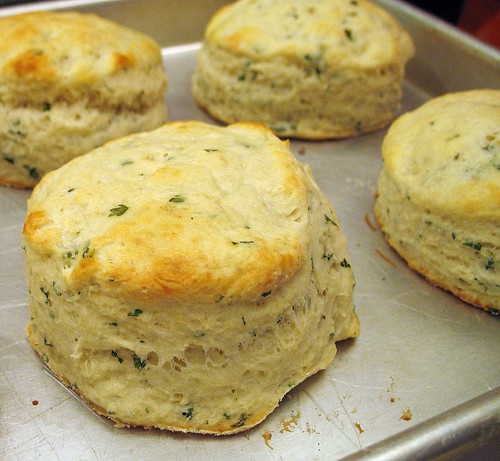
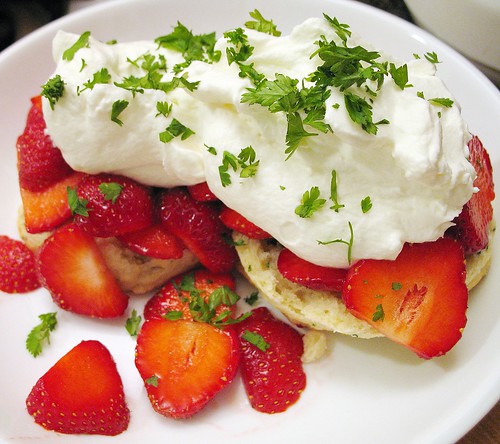
I really want to make this again before strawberry season ends because the chervil flavor didn't come through as intensely as I'd hoped it would and I want to try something else with it: There's a recipe for herb-infused milk or cream in The Herbfarm Cookbook that's a very simple but very effective process of extracting loads of flavor from herbs through heating and steeping. This is the same idea I recently made use of in preparing the chamomile-honey crème anglaise I wrote about; it's not any more complicated than making a cup of tea, and I think it's necessary to infuse the cream for the biscuits if the chervil is to play a major role in this dessert. Another thing I'd like to try is maybe adding a splash of Pastis to the whipped cream, which would complement the chervil's anise notes.
strawberry-chervil shortcake
shortcake recipe from James Villas
serves 8
for the shortcake:
2 cups all-purpose flour
1 tablespoon baking powder
2 tablespoons sugar
1/2 teaspoon salt
1/4 cup fresh chervil, finely chopped
1 1/4 cups heavy cream
milk for brushing (optional)
for the rest of the dessert:
strawberries
heavy cream
powdered sugar
more fresh chervil, finely chopped
Heat the oven to 425°F (220°C).
Whisk together the flour, baking powder, sugar, salt and chervil. Add the cream and stir just until the ingredients start to form a dough. Turn the dough out of the bowl onto a lightly-floured surface and gently knead it just long enough to thoroughly combine the ingredients. (Villas says "knead about 8 times").
Pat the dough out approximately 1/2-inch thick and cut out biscuits using a 3" cutter. If you need to, pat the scraps together and cut out more biscuits until you have eight of them, but try to handle the dough as gently as possible. (I'd also recommend that you rinse your hands with very cold water and dry them quickly before you do this, but maybe I'm just paranoid about being very deliberate with biscuit dough).
Arrange the biscuits on a baking sheet or two, brush them with a little milk or cream (optional), and bake them approximately 15 minutes, or until they are lightly browned. (I use two quarter-sheet pans and rotate them while cooking, and that seems to be a good way to cook them evenly).
Let the biscuits cool completely. In the meantime, wash and slice the strawberries, and whip the cream and powdered sugar together in a large bowl. (As I mentioned above, I only made enough whipped cream for the two of us, and I used approximately 1/2 cup cream and 1 tablespoon powdered sugar).
Split the biscuits and pile the sliced strawberries, whipped cream, and additional chopped chervil on top.




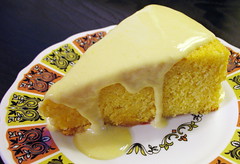
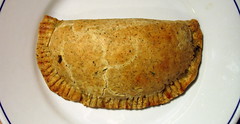


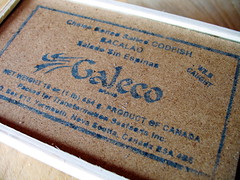

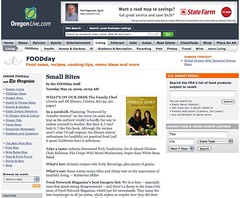


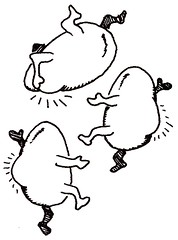
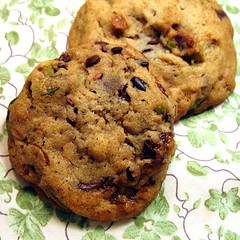

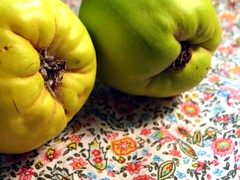
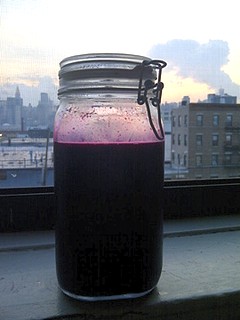
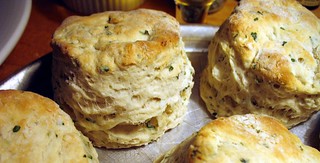
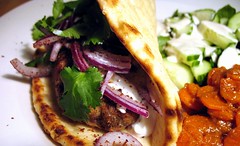
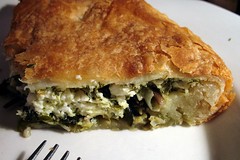


No comments:
Post a Comment